The actin polymerization factor Diaphanous and the actin severing protein Flightless I collaborate to regulate sarcomere size
- PMID: 32980309
- PMCID: PMC8279456
- DOI: 10.1016/j.ydbio.2020.09.014
The actin polymerization factor Diaphanous and the actin severing protein Flightless I collaborate to regulate sarcomere size
Abstract
The sarcomere is the basic contractile unit of muscle, composed of repeated sets of actin thin filaments and myosin thick filaments. During muscle development, sarcomeres grow in size to accommodate the growth and function of muscle fibers. Failure in regulating sarcomere size results in muscle dysfunction; yet, it is unclear how the size and uniformity of sarcomeres are controlled. Here we show that the formin Diaphanous is critical for the growth and maintenance of sarcomere size: Dia sets sarcomere length and width through regulation of the number and length of the actin thin filaments in the Drosophila flight muscle. To regulate thin filament length and sarcomere size, Dia interacts with the Gelsolin superfamily member Flightless I (FliI). We suggest that these actin regulators, by controlling actin dynamics and turnover, generate uniformly sized sarcomeres tuned for the muscle contractions required for flight.
Keywords: Actin filaments; Actin polymerization; Actin severing; Diaphanous; Drosophila; Flight muscle; Flightless I; Formins; Gelsolin; Muscle maintenance; Sarcomere.
Copyright © 2020 Elsevier Inc. All rights reserved.
Conflict of interest statement
Declaration of competing interest None.
Figures
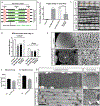

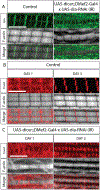
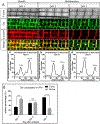
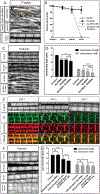
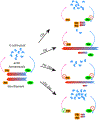
Similar articles
-
Interplay between passive tension and strong and weak binding cross-bridges in insect indirect flight muscle. A functional dissection by gelsolin-mediated thin filament removal.J Gen Physiol. 1993 Feb;101(2):235-70. doi: 10.1085/jgp.101.2.235. J Gen Physiol. 1993. PMID: 7681097 Free PMC article.
-
Flightin is essential for thick filament assembly and sarcomere stability in Drosophila flight muscles.J Cell Biol. 2000 Dec 25;151(7):1483-500. doi: 10.1083/jcb.151.7.1483. J Cell Biol. 2000. PMID: 11134077 Free PMC article.
-
Muscle-specific stress fibers give rise to sarcomeres in cardiomyocytes.Elife. 2018 Dec 12;7:e42144. doi: 10.7554/eLife.42144. Elife. 2018. PMID: 30540249 Free PMC article.
-
Elastic properties of connecting filaments along the sarcomere.Adv Exp Med Biol. 1993;332:71-9. doi: 10.1007/978-1-4615-2872-2_7. Adv Exp Med Biol. 1993. PMID: 8109381 Review.
-
Assembly and Maintenance of Sarcomere Thin Filaments and Associated Diseases.Int J Mol Sci. 2020 Jan 15;21(2):542. doi: 10.3390/ijms21020542. Int J Mol Sci. 2020. PMID: 31952119 Free PMC article. Review.
Cited by
-
Developmental remodelling of Drosophila flight muscle sarcomeres: a scaled myofilament lattice model based on multiscale morphometrics.Open Biol. 2025 Aug;15(8):250182. doi: 10.1098/rsob.250182. Epub 2025 Aug 13. Open Biol. 2025. PMID: 40795996 Free PMC article.
-
Role of Actin-Binding Proteins in Skeletal Myogenesis.Cells. 2023 Oct 25;12(21):2523. doi: 10.3390/cells12212523. Cells. 2023. PMID: 37947600 Free PMC article. Review.
-
Regulation of organelle size and organization during development.Semin Cell Dev Biol. 2023 Jan 15;133:53-64. doi: 10.1016/j.semcdb.2022.02.002. Epub 2022 Feb 8. Semin Cell Dev Biol. 2023. PMID: 35148938 Free PMC article. Review.
-
Regulation of the evolutionarily conserved muscle myofibrillar matrix by cell type dependent and independent mechanisms.Nat Commun. 2022 May 13;13(1):2661. doi: 10.1038/s41467-022-30401-9. Nat Commun. 2022. PMID: 35562354 Free PMC article.
-
Human formin FHOD3-mediated actin elongation is required for sarcomere integrity in cardiomyocytes.Elife. 2025 Jul 15;13:RP104048. doi: 10.7554/eLife.104048. Elife. 2025. PMID: 40663059 Free PMC article.
References
-
- Afshar K, Stuart B, Wasserman SA, 2000. Functional analysis of the Drosophila diaphanous FH protein in early embryonic development. Development 127, 1887–1897. - PubMed
-
- Arimura T, Takeya R, Ishikawa T, Yamano T, Matsuo A, Tatsumi T, Nomura T, Sumimoto H, Kimura A, 2013. Dilated cardiomyopathy-associated FHOD3 variant impairs the ability to induce activation of transcription factor serum response factor. Circ J 77, 2990–2996. - PubMed
-
- Bai J, Hartwig JH, Perrimon N, 2007. SALS, a WH2-domain-containing protein, promotes sarcomeric actin filament elongation from pointed ends during Drosophila muscle growth. Dev Cell 13, 828–842. - PubMed
Publication types
MeSH terms
Substances
Grants and funding
LinkOut - more resources
Full Text Sources
Other Literature Sources
Molecular Biology Databases
Research Materials

